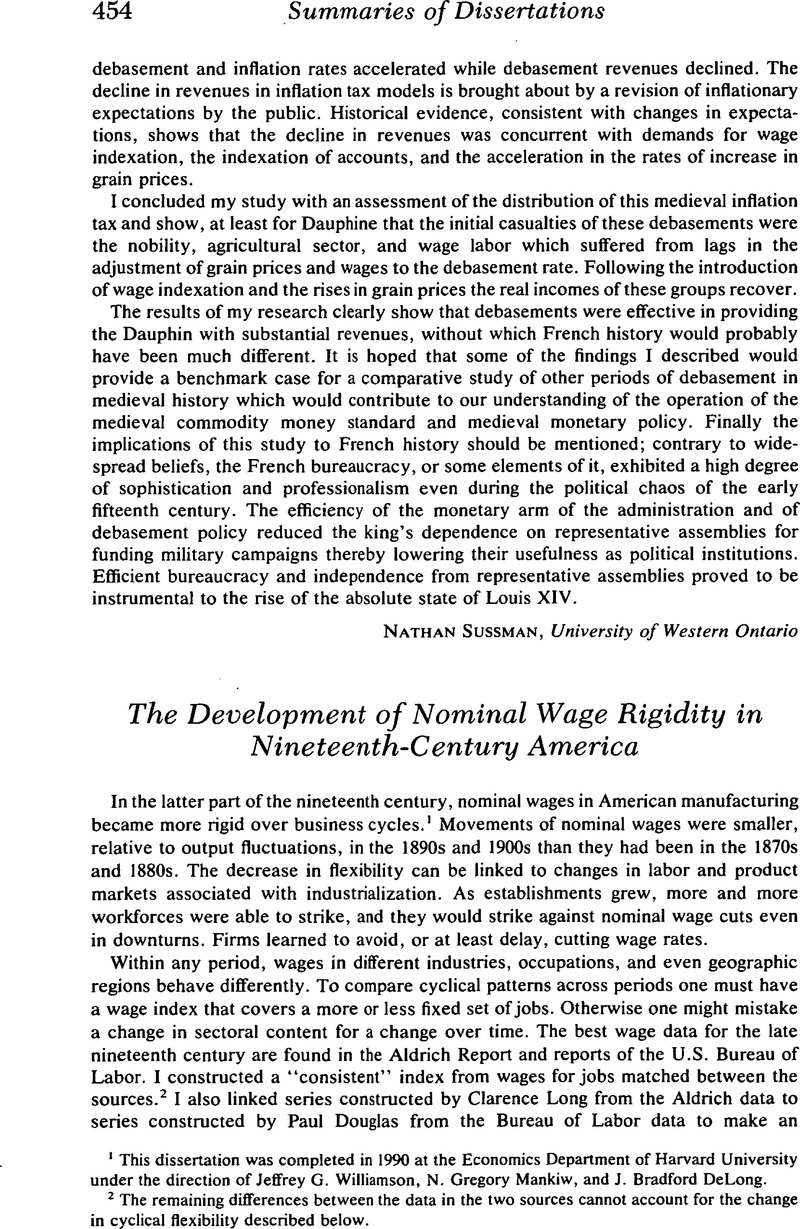Article contents
The Development of Nominal Wage Rigidity in Nineteenth-Century America
Published online by Cambridge University Press: 03 March 2009
Abstract

- Type
- Summaries of Doctoral Dissertations
- Information
- Copyright
- Copyright © The Economic History Association 1992
References
1 This dissertation was completed in 1990 at the Economics Department of Harvard University under the direction of Jeffrey G. Williamson, N. Gregory Mankiw, and J. Bradford DeLong.
2 The remaining differences between the data in the two sources cannot account for the change in cyclical flexibility described below.
3 Long, Clarence D., Wages and Earnings in the United Stales 1860–1890 (Princeton, 1960)Google Scholar; Douglas, Paul H., Real Wages in the United States, 1890–1926 (Boston, 1930).Google Scholar
4 Frickey, Edwin, Production in the United States 1860–1914 (Cambridge, 1947).Google Scholar
5 Gordon, Robert J., “A Century of Evidence on Wage and Price Stickiness in the United States, the United Kingdom, and Japan,” in Tobin, James, ed., Macroeconomics, Prices and Quantities: Essays in Honor of Arthur M. Okun (Washington, 1983)Google Scholar, table 1. O'Brien, Anthony, “The Cyclical Sensitivity of Wages,” American Economic Review, 75 (12 1985), pp. 1124–32.Google Scholar
6 Sachs, Jeffrey, “The Changing Cyclical Behavior of Wages and Prices: 1890–1976,” American Economic Review 70 (03 1980), pp. 78–90.Google Scholar
7 See Carroll Wright in United States Bureau of Labor, Third Annual Report of the Commissioner: Strikes and Lockouts (1887) (Washington, 1888), pp. 5, 1029Google Scholar; Joseph Weeks in United States Census Office, “Report on Trades Societies, and Strikes and Lockouts, by Joseph D. Weeks,” Volume XX of the Tenth Census (1880) (Washington, 1887), p. 5.Google Scholar
8 See, for example, Asheley, William James, The Adjustment of Wages (London, 1903), p. 162Google Scholar; Hicks, John R., A Theory of Economic History (Oxford, 1969), p. 155.Google Scholar
- 1
- Cited by




